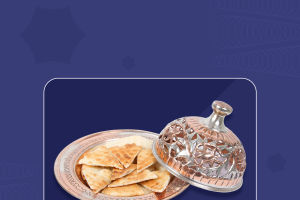Time For Meringue
Meringue is a type of dessert or candy, often associated with Swiss, French, Polish and Italian cuisines. They are light, airy, and sweet confections. Homemade meringues are often chewy and soft with a crisp exterior, while many commercial meringues are crisp throughout.
They are crisp on the outside and soft on the inside that seems like it will melt in your mouth. (YUM!) In order to achieve that texture meringue cookies, require preparations such as beating ingredients until foamy and fluffy, and cooking for a longer time under a lower temperature until meringue becomes dry on the outside.
It has been claimed that meringue was invented in the Swiss village of Meiringen and improved by an Italian chef named Gasparini between the end of the 17th century and the beginning of the 18th century. However, this claim is contested.
Although the term, Meringue, actually first appeared in a French cookbook written by François Massialot in 1692, interestingly there was an earlier recorded English manuscript book in 1604 by Lady Elinor Fettiplace, who gave a recipe that can be easily recognizable as a Swiss meringue. She called this recipe “white biskit bread.”
Preparing meringue is not a difficult task if you follow a few simple rules. At the base of it all, there is in fact a scientific process: the transformation of egg white proteins, which break down to recombine into a new structure, taking in air and increasing in volume. The addition of sugar helps stabilise the frothy mixture and maintain its shape, while the acidic element - usually cream of tartar or vinegar - serves to incorporate more air and expand the whipped egg whites.
Depending on the texture and method of preparation, there are three types of meringues: French meringue, the classic one made by beating egg whites and sugar until the mixture is satiny and solid and then baked in the oven; Italian meringue, made with a hot sugar syrup added to the egg whites, with a result that's softer and creamier; and finally the Swiss meringue, more similar to the Italian one in texture but prepared in a bain-marie.
French Meringue is the easiest to make, and most popularly used for making into meringue cookies. Throw in some spices or flavors, and you’ll be whipping (pun completely intended) up a gourmet treat with a snap of your fingers. This style creates the lightest meringue, but also the least stable.
Italian Meringue are used to top desserts because of its fluffy, marshmallowy texture, or use it in buttercream like its Swiss counterpart.
Swiss Meringue is best for making frosting on a cake. It’s slightly more complicated, but when made into a Swiss meringue buttercream, it yields a light, creamy (and dreamy!) yet stable frosting that is perfect for decorating and piping.
Here are tips for making meringues:
1. Older eggs have thinner egg whites, and are thus easier to whip up and create fluffier meringues. However, they are also less stable. If you’re looking for more stability in your meringues, use fresh eggs.
2. One of the most important parts of whipping up a meringue is ensuring that the sugar dissolves completely. Using room temperature egg whites will help that process along, and it’s especially true for French meringues where external heat isn’t introduced.
3. If you’ve looked up meringue recipes, you will see that some recommend lemon juice or cream of tartar. What the acidity does is to add flexibility to the foam, and while it takes longer to whip up a meringue with an added acid, it helps to create more stability in your meringues.
4. The sugar to egg whites ratio is very important in whipping up meringues. In general, you want to use 1 part egg whites to two parts sugar. Sugar binds with the water content in egg whites, and ensures that the structure is held in place. Don’t skimp!


